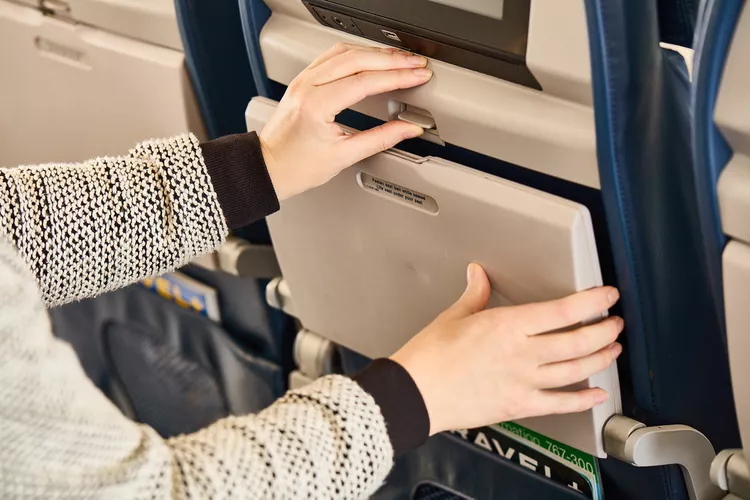Summary
The Importance of Safety
Just as seat-back trays are a standard part of every airplane cabin, stowing them for takeoff and landing is a crucial aspect of the flying experience. While you might find it frustrating to pack up your laptop early or hold your phone in your hand to watch a movie, there’s a very good reason why those trays must be locked during these phases: safety.
“The plane can experience sudden movements like turbulence or even an aborted takeoff. If the tray tables are left open and down, things on them could go flying and become dangerous. To prevent any objects from becoming hazards, it’s essential to stow and lock the tray tables in their upright position,” says David Doughty, CEO of private jet company Admiral Jet.
Regulations on Tray Tables
Moreover, tray tables need to be stowed for unobstructed passenger movement. “In the unlikely event of an emergency, you need to be able to get out of your seat quickly and make your way to the exit without being impeded by a tray table,” says Montreal-based flight attendant Steve Daniel. “This is also why we always ask to make sure your bags are fully stowed under the seat in front of you. It may seem like a minor detail, but in a critical situation, every second counts.”
Additionally, having the tray down may prevent passengers from assuming the proper brace position for impact, which, in forward-facing seats, typically requires bending forward in some manner. You can refer to the safety pamphlet in the seat-back pocket to determine your proper brace position or consult your flight attendant for instructions.
Turbulence and Passenger Safety
There’s a specific reason that trays must be stowed during takeoff and landing. “These are the phases of flight with the highest likelihood of unexpected events,” says former pilot Hans Mast, now a travel agent with Golden Rule Travel.
According to studies released by major aircraft manufacturers like Boeing and Airbus, a significant number of aviation accidents occur during takeoff and landing phases. In fact, Boeing’s findings indicate that approximately 67 percent of fatal accidents involving Boeing aircraft from 2011 to 2021 occurred during these critical flight phases. Similarly, Airbus data shows around 75 percent of accidents involving Airbus aircraft were during takeoff, approach, or landing.
The Federal Aviation Administration (FAA) mandates that seat-back tray tables must be stowed for takeoff and landing. “Safety always comes first in aviation, and these precautions are part of a broader strategy to minimize risk,” emphasizes Mast.
Maintaining Cleanliness
While passengers are allowed to use tray tables during other parts of the flight, it is advisable to do so sparingly, as turbulence can strike unexpectedly, turning belongings into projectiles that may cause injury. Furthermore, here’s a quick reminder: Clean your tray table with an antibacterial wipe before use. Studies have shown that tray tables can harbor up to eight times more germs than lavatory flush buttons.




